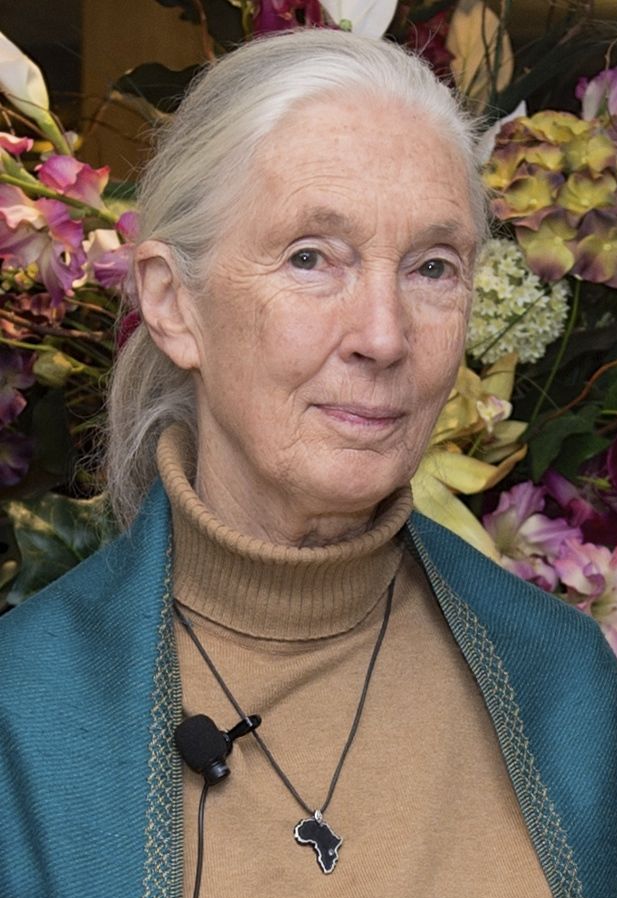Important dates
- April 3rd, 1934: Born in London, England, UK
- 1957: Began working with archaeologist and palaeontologist, Louis Leakey
- 1960: Began studying the Kasakela chimpanzee community in Gombe Stream National Park
- 1962: Leakey sent Goodall to the University of Cambridge to obtain her degree
- 1966: Completed her thesis
- 1977: Established the Jane Goodall Institute
- 1992: Founded the Tchimpounga Chimpanzee Rehabilatation Centre
- 2006: University of Tanzania awarded her an honorary Doctor of Science degree
- 2010: Petitioned to list all chimpanzees as endangered
- 2015: U.S. Fish and Wildlife Service accepted petition to classify all chimps as endangered
- 2019: Goodall honored for her scientific contributions with a bronze sculpture in Manhattan
“What you do makes a difference, and you have to decide what kind of difference you want to make.”
Valerie Jane Morris-Goodall was born on April 3rd, 1934 in Hampstead, London, England. Her fondness for animals started at a young age, treasuring a stuffed chimpanzee given to her by her father at the time. This love of animals brought her to her friend’s farm in the Kenya highlands in 1957. It was at this time that she reached out the Kenyan archaeologist and palaeontologist, Louis Leakey, per her friends advice. This conversation started the journey of her prominent studies, as Leakey was looking for a chimpanzee researcher at the time and invited Goodall to become his secretary.
In 1958, Leakey sent Goodall to London to study primate behavior while he raised funds. Two years later, in 1960, Goodall became the first of what would be called “The Trimates” when she went to Gombe Stream National Park. After a few more years of arranging funding, Leakey sent Goodall to the University of Cambridge in 1962. She obtained a PhD in ethology from the Newnham College, Cambridge, becoming just the 8th person allowed to study for a PhD there without first obtaining a bachelor’s degree. Her thesis detailed her first five years at the Gombe Stream National Park reserve, completing it in 1966.
Jane’s research findings at Gombe Stream National Park were revolutionary to the field of primatology. She reported that each individual had a personality and was capable of rational thought and emotion. Additionally, her discoveries of the chimps’ tool use challenged the standing idea that humans were the only species capable of constructing and using tools. Goodall also set herself apart from other researchers at the time with her unconventional naming strategy, assigning names to use individual chimpanzees in her studies rather than assigning each a number.
Alongside her research, Goodall has been a long-standing animal rights activist. She has founded and worked alongside numerous organizations that serve to protect animals and environmental conservation. In 1977, she established the Jane Goodall Institute (JGI), which is widely recognized for its conservation programs in Africa. Goodall has even collaborated with NASA, using satellite imagery to combat the effects of deforestation in Western Africa by providing the villagers with information on how to preserve their environment.
Goodall’s strong advocacy has continued to shine through a variety of pursuits and involvements. Today, she devotes nearly all of her time to her activism for the environment and chimpanzees, serving on the advisory council for Save the Chimps in Fort Pierce, Florida, and traveling almost 300 days a year. The gender diversity in the field of primatology has greatly shifted since Goodall started in the 1950s. Today, it is made up of nearly an equal proportion of men and women, in part thanks to Goodall’s trailblazing and encouragement toward young women to join the field.

